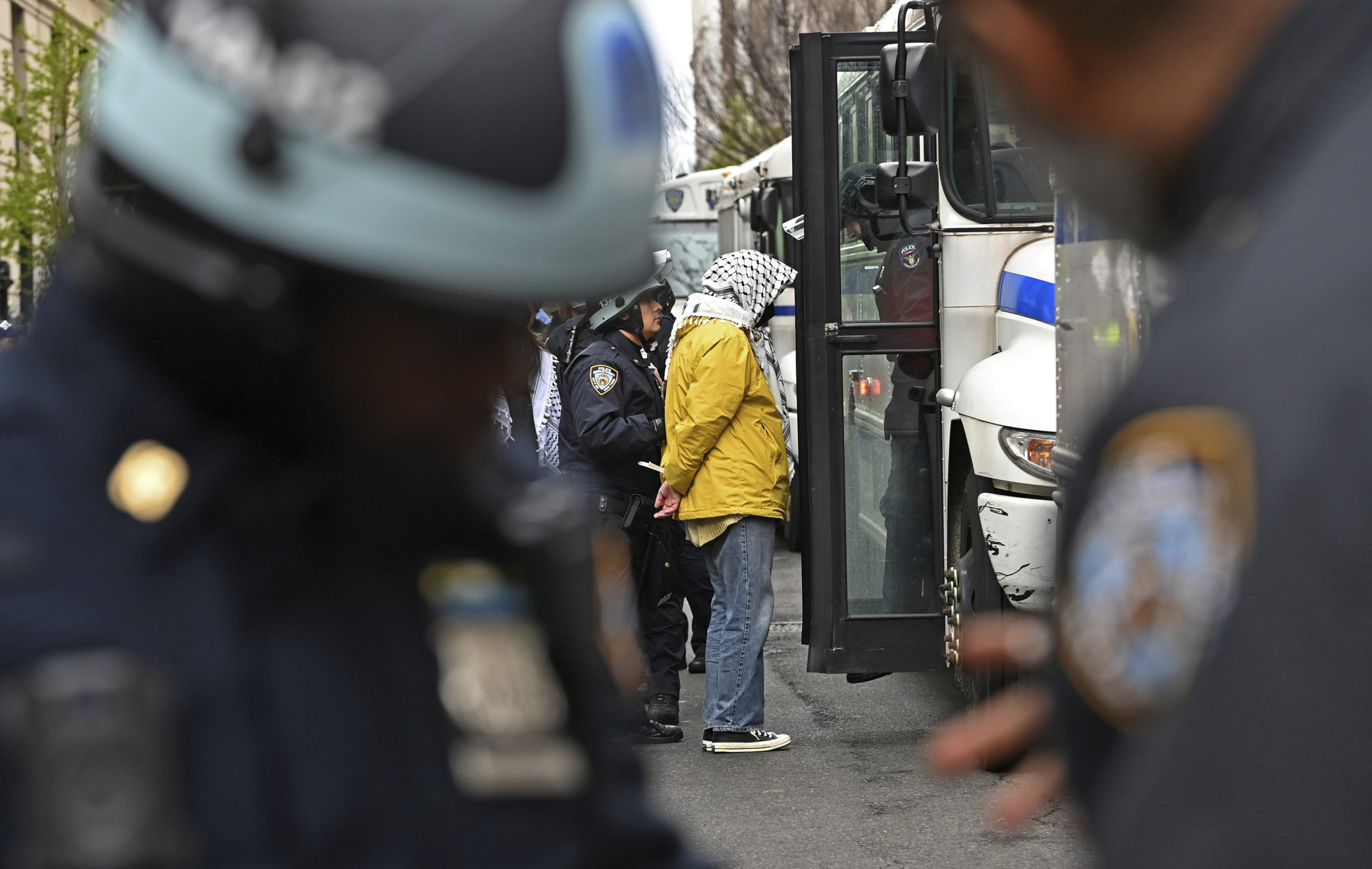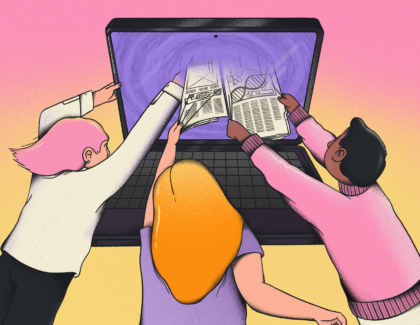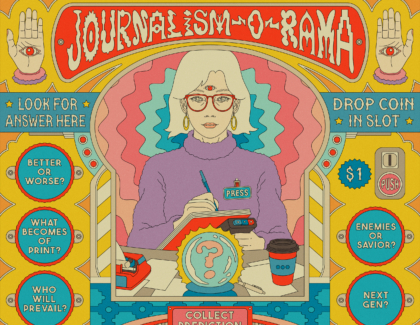Sign up for the daily CJR newsletter.
On April 30, 1968, New York City police officers, acting at the behest of officials at Columbia University, cleared five campus buildings that had been occupied by students protesting various issues linked to the war in Vietnam and the fight for racial justice. Police arrested around seven hundred people, and more than a hundred injuries were reported. The Spectator, the campus newspaper, quickly got an edition out, the front page of which contained photos of police surrounding an academic and a student with a bloodied head, as well as clipped, yet highly vivid, eyewitness dispatches compiled by twenty student journalists. (“The police moved in, some swinging radio aerials from walkie-talkies, whip-sawing faces. Several heads were pushed against the stone steps.”) The dispatches continued inside, interspersed with ads for aftershave and cologne, an Israel Independence Day celebration, and an issue of The Atlantic referring to the Vietnam War as “the wrong Rubicon.” The edition also reproduced a statement by Grayson Kirk, the president of Columbia, who said he had concluded, with the “utmost regret,” that he had taken “the steps necessary to permit the University to resume its operations.”
The events took a toll on the Spectator’s journalists, one of whom, the paper reported, was “hit in the face twice by a plain-clothes policeman” and “sent by a doctor to St. Luke’s Hospital, suffering from dizziness and double vision.” (The paper relayed this shocking fact deep down page three, in parentheses.) Even before the arrests, “most of the press was denied access to the occupied buildings, and the administration, paralyzed, wasn’t talking. So it fell to a group of not-quite and barely twenty-somethings—the reporters, editors, and photographers who made up the Spectator staff—to explain what was going on,” Robert Friedman, then the editor in chief, recalled fifty years later, in an essay for the paper. “With little or no sleep, we worked around the clock, climbing in and out of buildings, interviewing participants on all sides, describing what was being said behind closed doors; then writing, editing, and proofreading until dawn to keep the campus and the outside world informed, and then doing it all over again the next day.”
On Thursday, New York City police officers, acting at the behest of officials at Columbia University, cleared an encampment on a lawn outside the library that had been occupied by students protesting various issues linked to the war in Gaza. Police arrested over a hundred people. The Spectator (which, these days, only prints once a week) quickly got a story up online, which contained photos of officers leading away protesters with zip-tied wrists, as well as a video clipping together scenes of noisy chaos and eyewitness accounts compiled by twenty-one student journalists. The story quoted from an email to the university community written by Minouche Shafik, the president, who said that, “out of an abundance of concern for the safety of Columbia’s campus,” she had authorized police to begin clearing the encampment.
Since then, the Spectator has published at least seventeen more stories tracking the escalating fallout. Undeterred, protesters continued camping out into a third day, then a fourth, then a fifth. University administrators began notifying participants that they had been suspended and banned from entering “common areas” on campus, and that they could even lose access to Columbia housing. Various faculty members and students expressed outrage at the arrests. Over the weekend, pro-Israel counterprotesters reported receiving threats and anti-Semitic abuse both on and just outside campus, including shouts of “Go back to Poland, go back to Belarus” and “Burn Tel Aviv to the ground.” In a WhatsApp chat, a campus rabbi urged Jewish students to stay at home, adding, “it is not our job as Jews to ensure our own safety on campus.”
To quickly note: CJR is based within Columbia’s Journalism School, but it is not a student publication; we cover the media industry and related debates, not campus life. Speaking personally, I have not observed any of the events on campus in recent days since I don’t live in New York. For a detailed blow-by-blow accounting of what’s happening on the ground, I’d suggest that you read the Spectator or other reporting from journalists on campus.
This being said—and as in 1968—the arrests and their aftermath have become a media story in various respects, including on campus. While some journalists from outside news organizations have reported from campus, various others say they have had difficulty getting in. (On Friday, the Columbia Journalism School invited credentialed members of the media who had been denied access to get in touch over social media so that they might facilitate it.) Over the weekend, WKCR, a radio station at Columbia, said that a university public safety officer had asked its personnel to leave the building from which they were broadcasting, as part of a general evacuation. After explaining that WKCR is a “press organization with a duty to the people of NYC to operate a 24/7 FM signal,” and following a number of phone calls, the station’s staff was allowed to stay put. WKCR said that it was told there had been a “misunderstanding.”
And if, as Friedman would later put it, the 1968 protests became a national front-page news story and made Columbia “the center of the universe,” something similar has happened this time—albeit in a very different media ecosystem, one by turns fractured and amplified by the noise of social media. In a statement marking Passover, the White House condemned “reprehensible and dangerous” anti-Semitism on college campuses, without naming Columbia directly; the official X account of the state of Israel retweeted a video of protesters outside the campus gates, referring to them as “terrorists.” Speaking for myself, trying to follow what was actually happening online over the weekend was a disorienting, maddening experience; as Zeynep Tufekci, a professor at Princeton (and formerly at Columbia Journalism School), put it yesterday, “a student protest is going national on the basis of very distorted impressions.” (For one, it’s far from clear which protesters are affiliated with the university and which aren’t. Yesterday, protest organizers at Columbia put out a statement saying that they “reject any form of hate or bigotry” and are “frustrated by media distractions focusing on inflammatory individuals who do not represent us.”)
The crisis at Columbia has entered into a broader national media climate that has treated campus culture as a huge story in recent years, and particularly since Hamas attacked Israel on October 7 and Israel responded by bombarding Gaza. As I see it, such coverage has sometimes been over-generalized and has often been disproportionate—even distracting, at times, from the much weightier events in the region, where tens of thousands of Palestinians and over a thousand Israelis have been killed (including at least a hundred or so journalists, most of them in Gaza). The story’s arriving in the media capital of the nation, if not the world, was always likely to supercharge it. And yet this type of story does raise important questions—about the repression of speech, the abuse of it, and the advance of a culture war that, it increasingly seems, has left no American institution untouched.
That, of course, includes the media itself—an institution whose lifeblood is speech, and one that has been rocked by sharp differences over the war ever since it began; as my colleague Ayodeji Rotinwa reported in December, “nothing in recent memory has riven newsrooms the way this war has.” To that point, journalists in several newsrooms worldwide had been punished, even fired, for public expressions of solidarity with Gaza. Arab journalists working for US publications suggested that they had “borne the brunt of this moment,” Rotinwa reported, with both Western and Arab observers questioning their credibility and objectivity, for different reasons.
Such convulsions have continued since. Just last week, the New York Times concluded an internal probe that it launched after details of editorial disagreements over a story about Hamas deploying sexual violence as a weapon of war appeared in The Intercept; the probe did not reach a “definitive conclusion” as to what had happened but did identify “gaps in the way proprietary journalistic material is handled.” Inside and outside observers criticized the paper for siccing a leak investigation on its own staff, while the union representing Times journalists filed a grievance alleging that the probe targeted journalists of Arab and Middle Eastern descent. (The Times denies this.) Meanwhile, Uri Berliner, a senior editor at NPR, resigned after he was suspended for publishing an unauthorized essay in The Free Press accusing the broadcaster of drifting into uncritical left-wing orthodoxy. Among other complaints, Berliner criticized his colleagues for downplaying the events of October 7 and the global rise in anti-Semitic hate—and for covering “the Israel-Hamas war and its spillover onto streets and campuses through the ‘intersectional’ lens that has jumped from the faculty lounge to newsrooms.”
The controversy kicked off by Berliner’s essay was much wider than this one complaint, and in many ways different from the recent episode at the Times; both episodes raise questions about power dynamics and principles of collegiality and objectivity that are peculiar to newsrooms, or at least hard to directly compare to the recent events at Columbia. Still, there are some clear parallels. And some entanglements. For example, Christopher Rufo—a right-wing activist (and self-described journalist) who helped bring down the president of Harvard earlier this year in the aftermath of a prior, similar row about campus protesters, and who was quite explicit about his reasons for doing so—is now pushing to have Katherine Maher, the new CEO of NPR, fired after he unearthed some old tweets in which she expressed liberal views. (Maher posted the tweets prior to working in the media business, and does not set NPR’s editorial policy. The president of Harvard, it should be noted, ultimately fell over plagiarism allegations, but had recently appeared—disastrously—before a congressional committee hearing on campus anti-Semitism. Last week, the day before the Columbia arrests, Shafik appeared before the same committee.)
If the speech questions facing colleges and media organizations, in the context of the war and more broadly, are similar but not identical, much the same could be said of the comparison between this moment and 1968. This comparison has itself worked its way into the national-level coverage of the current crisis at Columbia—sometimes because of the self-evident parallels between the two sets of arrests (see above); sometimes because political reporters seem thirsty for an election-year comparison. (See also: the persistent 1968 narrative around the 2020 election.) Such comparisons can be instructive. But they can never be exact.
This extends, of course, to the Spectator’s coverage. Last week, following the arrests, the paper’s editorial board weighed in with a sharp rebuke of Shafik and nodded back to 1968. “History has made clear who stood on the wrong side then, and it’s clear that this is the side you are aligning yourself with now,” the editorial read, adding “this will be your legacy.” In the immediate aftermath of those violent 1968 arrests, however, the paper left a blank space where its editorial should have been. “All week, we had debated and disagreed about the events unfolding around us,” Friedman later wrote. “But that night there was no disagreement: Exhausted and horrified, we decided to run two columns of white space, surrounded by a thick black border, just below the masthead where the editorial was supposed to appear.” Those running the paper had concluded that sometimes, “silence is more effective than words.”
Other notable stories:
- Vanity Fair’s Charlotte Klein reports that Donald Trump’s presidential campaign has denied press credentials to several journalists whose work has displeased it. These reporters can still attend Trump rallies, but must do so on the same terms as the general public, which entails inconveniences. In 2016, Trump’s campaign denied credentials to entire news outlets; this time, one reporter told Klein, it’s being “more picky-choosy.”
- Lawmakers in New York State approved a budget that includes ninety million dollars in payroll tax credits to incentivize the hiring of local journalists—the first such provision to pass nationwide. “The aid will be split between companies with 100 or fewer employees and larger ones,” Politico reports, with eligible outlets receiving “a 50 percent refundable credit for the first $50,000 of a journalist’s salary, up to a total of $300,000 per outlet.”
- Washingtonian’s Andrew Beaujon dug into the recent decision by bosses at WAMU, an NPR member station in Washington, DC, to shutter DCist, the news site under its aegis. Bosses say that the site caused WAMU to deviate from its core mission of audio broadcasting, but the decision also “tanked employee morale and baffled some faculty members and alumni of American University, which operates WAMU,” per Beaujon.
- Press Gazette’s Bron Maher dug into the sharp recent layoffs at openDemocracy, a newsroom that has done impressive work in the UK. The extent of a “funding crisis” at the nonprofit “only became apparent to the board in February,” Maher writes, but “questions remain among staff as to how these issues emerged so suddenly.” Now “the bad blood within the organisation has escalated to legal letters,” Maher reports.
- And Terry Anderson, a reporter with the AP who was abducted by Hezbollah in Lebanon in 1985 and held hostage for nearly seven years, has died. He was seventy-six. “He never liked to be called a hero, but that’s what everyone persisted in calling him,” Sulome Anderson, his daughter, said. When asked recently if he had anything left on his bucket list, he replied, “I’ve lived so much and I’ve done so much. I’m content.”
ICYMI: A camera-free courtroom gives Trump the upper hand
Has America ever needed a media defender more than now? Help us by joining CJR today.







